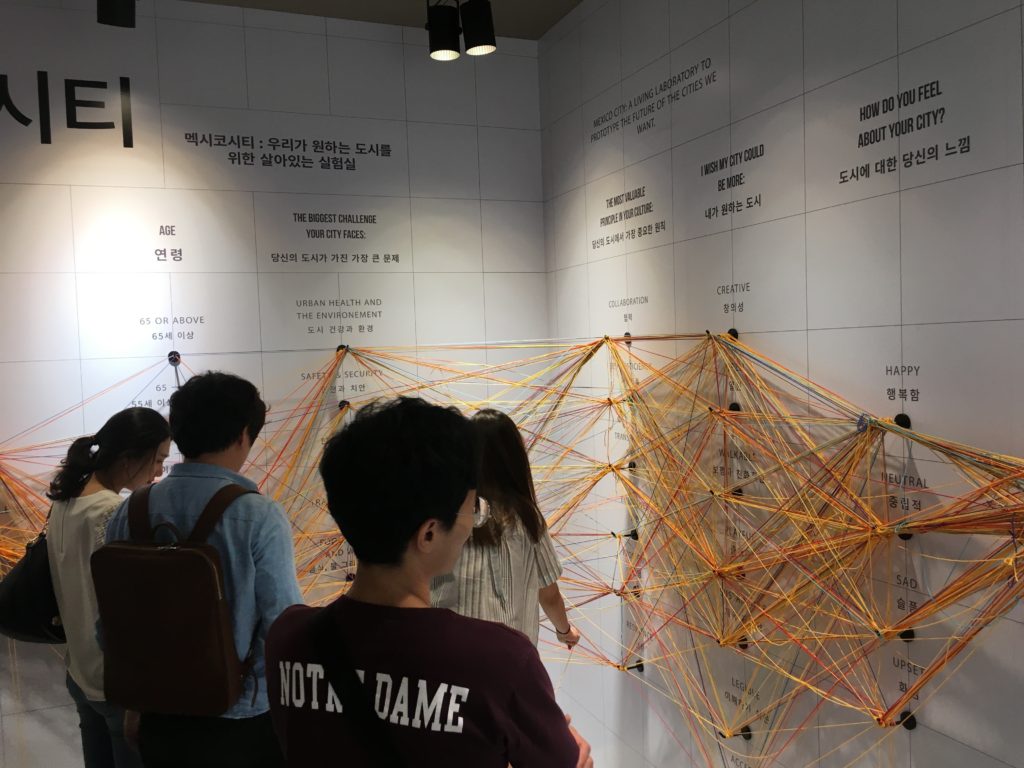“Miseries of migrant labourers worsen amid coronavirus pandemic and lockdown.” – (Economic Times, April 11, 2020).
“Nearly 600,000 workers migrated on foot during lockdown, govt tells SC”. – (Business Standard, April 1,2020).
“In locked down India, poor migrants are on a long march back home” – (Quartz India, March 27, 2020)
These headlines have trickled in ever since the lockdown for the pandemic has been imposed in the country. Arguments have flown across both sides of the aisle. One side calls it poor planning and a callous disregard of human suffering. The other side claims that hindsight is 20/20 and that only so much can be planned in such uncertain times for a large population. The truth lies somewhere in the middle.

Disregarding the political nature of the debate, if we delve into the problem at hand dispassionately, there arises an opportunity to look at it in terms of available data, scenario planning, data analytics, modelling and finally, rational decision making. But even before that, the problem can be approached holistically, to include an understanding of social behaviours, acknowledgment of complex interrelationships and most importantly an assessment of impact from the perspective of the interconnected nature of action and consequence. Because everything is connected!
And we don’t have to think digitally for this. Take the famous return of the wolves to Yellowstone Park analogy. The elimination of wolves by American farmers, who perceived them as a threat to livestock, led to a rise in the elk population in the park. This led to overgrazing and the subsequent decline of forest undergrowth and trees like willow and aspen. Soil erosion caused rivers and streams to change course! Songbirds disappeared, and the fish population decreased in streams leading to a decrease in the grizzly population. The reintroduction of Canadian timber wolves in 1995[i] in the Lamar valley has led to the restoration of ecological parity. With the elk population now more in control nature has healed to some extent bringing the park back to life. Replay this scenario in a more frantic, responsive and connected world like ours and action/consequence can be devastating within days. Thus, there is a need for a more deliberate, data driven and analytical approach to complex problems in policy making.
Such an approach is called whole systems thinking.
Let us get the definitions right then. Whole Systems Thinking is a method to understand how things (elements and systems) are related, and how they influence one another within a whole. An example of systems thinking is how elements like water, sun, soil, air, plants, animals and human beings interact and support one another as a system.[ii] Systems thinking is aware of the circular nature of the world we live in and acknowledges the entropy within systems that often leads to unintended consequences.
In short, systems thinking is a great diagnostic tool for a complex situation. These problems cannot be solved by any one actor, any more than a complex system can be fully understood from only one perspective.
Brainstorming
There are several tools available for approaching a whole system diagnostic. But the first rule remains – avoid assigning blame (which tends to be the first port of call).
The second step is to build a multidisciplinary team that can brainstorm the problem using tools like the Ishikawa diagram or Fishbone diagram. This diagram articulates the problem as its head and the causes for the problem feeding into the spine.

(Reference: Wikimedia Commons)
Another brainstorming tool that is often used is the Mind Map which tends to build out major ideas connected to a single concept with other ideas branching out of those ideas.
 (Reference: Wikipedia)
(Reference: Wikipedia)
Modelling
The next step is to start building the elements of the problem based on available data to get a comprehensive view of the story. Modelling tools include:
- Behaviour Over Time diagram (BOT) – These are time relationship diagrams that help us understand the behaviour of multiple variables over time. e.g. the grades of students in a school can be evaluated as a function of a set of variables including teacher time variations, infrastructure investments made over a period of time, tenure variation of principal appointment, etc.
- Causal loop diagrams (CLD) – These diagrams help us visualise variables and their interrelationships by ways of nodes and connecting lines that show positive or negative links. Two nodes connecting positively increase or decrease together. A negative connection implies the growth of one lead to the decrease of another and vice versa.
- Closed cycles in such diagrams form reinforcing loops where variation in a single variable reinforces it after propagating through the loop. For e.g. an increase in bank balance leads to increase in interest earned that leads to increase in bank balance.
- They can also form balancing loops where the variation in a variable propagates to eventually oppose the original variation. For e.g. Lean inventory control involves enough product on hand to fill current orders. As sales increase, production is increased until the actual inventory nears the required inventory, and then production is slowed until more inventory is required.
A combination of BOT and CLD can be used to identify reinforcing and balancing loops. This helps us clearly understand the relationships and predict what consequence would an intervention in a system lead to.
Understanding this in a simple example, in an employee-supervisor reinforcing loop below, positive feedback from the supervisor is capable of producing improved employee performance, while negative feedback can produce poor employee performance over time

System Archetypes
System archetypes [iii] are another helpful way to recognise common patterns in causal diagrams. A few examples of these are:
- Drifting Goals: In a “Drifting Goals” archetype, a gap between the goal and current reality can be resolved by taking corrective action or lowering the goal. Drifting performance figures are usually indicators that the “Drifting Goals” archetype is at work and that real corrective actions are not being taken.
- Fixes that Fail: In a “Fixes That Fail” situation, a problem symptom desperately seeks resolution. A solution is quickly implemented that alleviates the symptom, but the unintended consequences of the solution exacerbate the problem. Breaking a “Fixes that Fail” cycle requires making a commitment to solve the real problem.
- Tragedy of the Commons: In a “Tragedy of the Commons” structure, each person pursues actions which are individually beneficial. If the amount of activity grows too large for the system to support, the “commons” experiences diminishing benefits. Solutions to the “tragedy of the commons” situation never lie at individual levels but in understanding collective loss.
Once relationships in a problem are articulated in models, an overall systemic view can be arrived at using computer modelling. This can translate all relationships identified as relevant into mathematical equations, which become the basis of running simulations for problem solving and scenario planning.
The popularity of systems thinking to decode challenging problems has led it to be adopted in several management tools like the Interrelationship diagram – one of the 7 new Quality Control (QC) Tools described in the Japanese classic “Management for Quality Improvement“. [iv]
Approaching complex problems, in the times that we face now, requires a whole system thinking approach and a due diligence in analytics that should be part of our policymaking team’s muscle memory. This requires setting up data collection processes, analytics, and multidisciplinary problem-solving teams (including policy analysts, statisticians, artists and planners). With the advent of Big Data and predictive analytics, a data-driven approach to policy making has long been advocated and we believe its time has come.
After all, an unintended consequence of an ill-planned intervention can be one of real and untold suffering, such as that of the migrants on the road.
REFERENCES
[i] https://www.yellowstonepark.com/park/yellowstone-wolves-reintroduction
[ii] https://sustain.ok.ubc.ca/whole-systems-plan/what-is-it/
[iii] https://thesystemsthinker.com/wp-content/uploads/2016/03/Systems-Archetypes-I-TRSA01_pk.pdf
[iv] https://asq.org/quality-resources/new-management-planning-tools
 Sandeep Hota is the Strategy Partner of Marg Advisory Services based in Bhubaneswar, Odisha. He worked in PwC UK and Canada’s Operations Practice for several years. He has over 14 years of business and technology consulting experience in diverse industries including infrastructure, higher education, retail, healthcare, IT services, energy and telecom. Sandeep has strong project management skills and experience of working in cross cultural teams across the world.
Sandeep Hota is the Strategy Partner of Marg Advisory Services based in Bhubaneswar, Odisha. He worked in PwC UK and Canada’s Operations Practice for several years. He has over 14 years of business and technology consulting experience in diverse industries including infrastructure, higher education, retail, healthcare, IT services, energy and telecom. Sandeep has strong project management skills and experience of working in cross cultural teams across the world.
Disclaimer: The views, thoughts, and opinions expressed in the content belong solely to the author, and not necessarily to the author’s employer, organization, committee, or other related groups or individuals, including Marg Advisory Services.


Sachin M
23 May 2020Very well written article. Excellent job explaining whole systems thinking and breaking it down in a digestible manner. One suggestion is instead of referencing example diagrams for fish bone and mindmap from Wikipedia, create your own diagram with the topic at hand. This will resonate better with the reader.
Sukanya Rath
26 May 2020Thank you for your feedback, we’ll keep your pointers on the radar.
Charudutta Panigrahi
26 May 2020This write up is a lighthouse beam, laying the path to a transformation which should and has to happen immediately. There is no time to doubt or procrastinate or get threatened. The theories are established, the examples appropriate and the whistles screaming. Whole systems thinking needs whole acceptance first and that’s where this piece is an advocacy tool. A strong driver which can take you down the road to a safe parking, alert and conscious because this thinking is science. Migrant issue warrants whole systems thinking and application. The writer comes in at the right time and with the right tone.
Sukanya Rath
26 May 2020Thank you, Sir. Your observations are on point, spot on.
Scott Koronka
26 May 2020I like this. The wolves in Yellowstone is a good example to call out. Issue I see is getting politicians and businesses to take short term actions for the good of the long term. The disconnect between the costs and the benefit is at the root of a lot of today’s problems…climate change, covid, high government debt, lack of infra spending….etc
Sukanya Rath
27 May 2020Thank you for stopping by – to read, and share your thoughts.
Rupendra bhatnagar
28 May 2020Very sound contextual thinking. Enjoyed reading
Ashu M
28 May 2020well done …keep em coming!!! 🙂
Deepak
28 May 2020Good read.. thank you!
Gouri P. Sahu
28 May 2020Thank you Sandeep for an insightful article. I liked the idea about Whole Systems Thinking and the applicability to real life challenges, particularly the introduction with the current pandemic (a socio-economic challenge) and reinforcing its relevance with the examples from the past affecting ecology. Leveraging mind mapping is often useful to find the territories of the challenge we are going to solve and will take back system archetypes as a leaning to find patterns. Keep writing !!!
Sukanya Rath
28 May 2020Appreciate the encouragement and feedback, thank you!
Piyush K
28 May 2020Quite well written article brings a ton of concepts to light that can be applied to multitude of problems and environments in a logical manner.
Sukanya Rath
28 May 2020Thank you for the feedback, we appreciate it.
Lopamudra Mohanty
29 May 2020Well composed article .. got strong potential to ignite new thoughts.. i liked the articulation and flow of the article..my two cents ..you can try correlation matrix instead of fish bone which is quite handy in the current world of Analytics . When we deal with ocean of variables and we are in the process of exploring a possible correlation ..
Sukanya Rath
29 May 2020Thank you. We hope to bring you more such good reads in the coming days.
Natasha Sarin
13 Jun 2020A really insightful read that’s super well-articulated! A pretty complex premise that’s been conveyed logically enough to make great sense even to a layman. Also gets one thinking about how India, in its current situation, definitely needs solutions to Fixes that Fail, for starters.
Sukanya Rath
14 Jun 2020We appreciate your feedback, thank you!